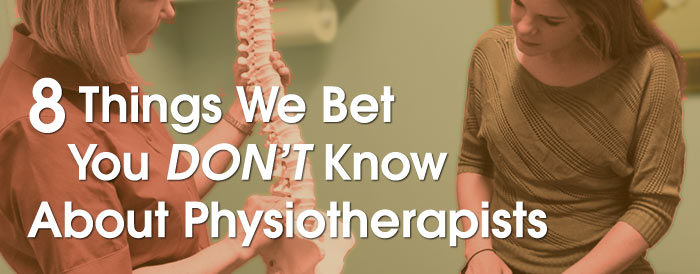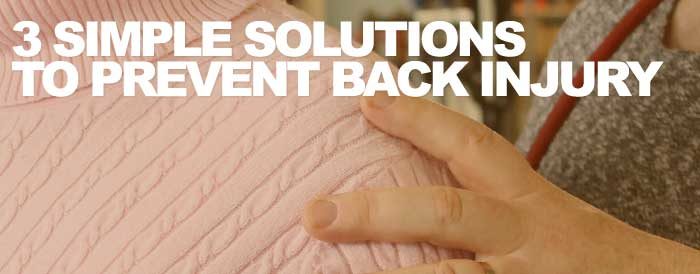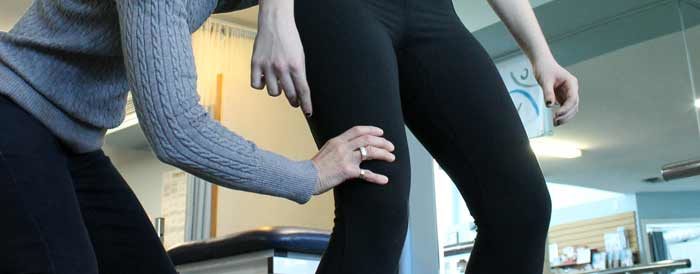4 Exercises to Help You Lose Weight with Zero Running
The average person believes running is the best exercises for losing weight. And while running provides a good workout, it may not be for everyone. For those that do not like running or find it difficult to do, there are other exercise options that can burn calories to help you lose weight.
So for your next workout, skip the treadmill and try:
1. Jumping Rope:
Did you know jumping rope uses more muscle groups than running, or that ten minutes of jumping rope burns the same amount of calories as running an eight-minute mile? Yup, this simple exercise is just as effective as running. Plus it challenges your endurance, balance, and coordination while adding definition to your calves and shoulders. Aim to do 10 – 20 minutes of jumping rope to reap these benefits.
2. Indoor Rock Climbing:
This fun activity combines cardiovascular exercise with resistance training and can burn up to 500 calories in just half an hour. An indoor climbing wall allows for proper skill development and confidence building since everyone climbs with the support of a harness. Thanks to rock climbing’s recent popularity, finding an indoor facility has never been easier. If you’re looking for a rock climbing option in Newmarket consider Of Rock and Chalk (note: York Rehab has no affiliation with this company nor are we endorsing it, ensure that you evaluate any fitness facility thoroughly before using to ensure the proper safety and maintenance practices are in place, qualified staff are available to assist you and that you feel comfortable in the space).
3. Rowing:
Rowing could be considered the perfect exercise because it works all the main muscles – thighs, back, abs and arms. While it is a lower impact workout compared to running, it still delivers a decent burn of up to 420 calories in half an hour. Best of all, the rowing machine at your gym will likely have no line up, so there’s no waiting to start your workout.
4. Burpees:
This classic calisthenic will get your heart rate up in a hurry while toning your arms, legs and core. Burpees are the perfect on-the-go exercise because no equipment is needed and can be done anywhere. Are you wondering how to do a burpee? No problem! Here’s how:
Stand with your feet hip-width apart, knees slightly bent. Swing both arms back and jump straight up into the air. Land softly on your toes and lower into a squat and place both hands on the floor. Jump your feet back into a plank position with your hands under your shoulders. Lower your chest down to perform a push-up. Jump both feet back in and return to starting position. Repeat. Continue to do as many reps as possible – burpees are hard work so don’t be discouraged if you can only manage a few. As your endurance develops work your way up to as many as you can in a minute.
Try including one of these activities in your existing fitness routine to keep your workouts interesting and challenge your body so you continue to lose weight. Haven’t exercised in a while or never tried these exercises? Remember to check with a physiotherapist or physician before beginning a new exercise routine.
8 Things We Bet You Don’t Know About Physiotherapists
You have probably heard about physiotherapy and have a general idea about what it is. But how much do you know about physiotherapists? Here are some things you probably don’t know about us:
- Recovery is our focus, not maintenance. Our goal is to help you feel better as quickly as possible and get you on the road to recovery while minimizing the number of return visits.
- You don’t need a doctor’s referral to see a Physiotherapist – if you think you need to see a Physio, give a clinic near you a call and discuss your needs. If you have health insurance, be sure to check and see what your insurer requires and covers since most physiotherapy is not covered by OHIP.
- We are university educated healthcare professionals. In addition to completing an undergraduate degree, along with a Master’s Degree in Physiotherapy, we must pass a comprehensive oral and written exam that we only have three chances to pass – three unsuccessful attempts leads to choosing another career. After successfully acquiring our degree and completing the exam, then and only then can we legally use the title Physiotherapist. Be aware that some injury care providers offer physiotherapy but it’s important to note that someone who says they do physiotherapy is not necessarily a Physiotherapist.
- We know body mechanics really well! By observing some of your basic movements we can determine what exercises you need to do to become better at your sport, reduce injury and even recommend activities you can begin if you’d like to become more active and find your stride in a regular activity or sport.
- We are not just about helping you recover from aches and pains. We are also an integral part of recovery after heart surgery, we provide treatment for lung conditions (like chronic bronchitis, asthma, emphysema or pneumonia) and we can help manage neurological conditions (i.e. Parkinson’s and MS).
- Babies are our patients too! When babies are born with minor muscular issues such as torticollis, we can help. Torticollis is a condition of the neck that happens when a major muscle called the sternocleidomastoid becomes shortened or contracted. This shortening causes the baby’s head to be fixed in a tilted position. By gently stretching the affected muscle, educating parents about proper head bolster positioning and teaching at-home stretches and strengthening exercises, we can help speed up recovery and minimize long-term complications. Pediatric Physiotherapists can also assess your child to ensure he/she is meeting their physical developmental milestones.
- We can help new moms overcome diastasis recti, bladder incontinence, low back pain and pelvic floor disability. Many new moms feel that these postnatal concerns are something that they will have to live with or are normal. But there is nothing normal about incontinence or consistent pain, and a physiotherapist can help retrain and strengthen these weak muscles.
- Acupuncture can be part of a physiotherapy treatment plan as it helps promote healing, reduce or relieve pain and improve function of the affected area of the body. The practice of acupuncture is learned through a specialized training program completed after earning a Physiotherapy designation.
I have Tennis Elbow? But I don’t play tennis!
What is Tennis Elbow? Medically known as lateral epicondylitis, it happens when your elbow tendons are strained or injured. These are the muscles that allow you to grip or twist, and are vulnerable to injury from repetitive motions of the wrist and arm.
Does this sound familiar? You are coming off the 18th hole at the golf course and as you reach for a club, you feel soreness in your left arm that extends up towards your neck. It’s your first round of the season so you don’t think much of it. But when you are getting ready for bed that evening, the soreness is more noticeable and has started to throb.
Or perhaps you spent that bright sunny Newmarket Saturday, re-staining the deck and painting the fence. The work is done and you’re ready to relax and enjoy dinner but feel sharp pain as you cut into your food. You take a pain reliever to ease the pain and help you get some rest. By the morning the pain is back along with soreness.
Days after your golf game or painting project you also continue to experience pain. When tasks that involve gripping, turning, or bending your wrist, simple things like opening a door or drinking from your coffee mug, make you wince. These are signs that you may have Tennis Elbow.
Tennis Elbow can develop from:
- Unaccustomed or repetitive activity like painting, hammering, gardening or carrying something heavy
- Excessive or constant gripping, turning or wringing motions like those performed by carpenters, plumbers, butchers and even cashiers
- Poor forearm muscle strength or tight muscles
- Repetitive movements that involve bending the wrist in a turning or backwards motion
Tennis Elbow can become a chronic injury if left untreated. If you think you might have Tennis Elbow, consider coming to York Rehab for an assessment by one of our physiotherapists. Working with a physiotherapist is an effective way to reduce the pain associated with Tennis Elbow, restore normal range of motion and find the root of the problem.
To get you on the road to recovery, our physiotherapists will create an individualized treatment plan based on your level of physical activity and lifestyle. The treatment plan could include: manual therapy, acupuncture, ultrasound, laser treatments, muscle stretches, massage and strengthening.
While Tennis Elbow is not life threatening, it can be life altering – affecting how you enjoy the activities that you love. Tennis Elbow is pain you do not have to live with! Visit our Newmarket physiotherapy clinic, we can help.
3 Simple Solutions to Prevent Back Injury
Your back is a contributor to your strength, power and range of motion. Almost everything you do requires the use of this body part, which makes us all vulnerable to back injury. The best way to prevent a back injury is to develop habits that reduce the strain placed on the back.
Here are some things that put you at risk for back injury.
Problem #1: Poor Posture or prolonged bending
Our lifestyles promote inactivity and poor posture. Just look at people working at a computer. We tend to slouch and stay in this position for long periods. This can create strain on the neck, mid back and low back.
Solution: Get up and move! Every 60 minutes, unless you are driving, stop what you are doing. When sitting, ensure your tailbone touches the back of the chair. You can also use a roll to support your lower back when you have to sit for any length of time.
Problem #2: Poor Lifting Technique
Strong, healthy people can sustain a back injury if they lift a heavy object incorrectly. Familiarize yourself with the proper lifting technique.
Solution: Before you lift, engage your core. Keep the curve in the lower back. Bend your knees. Don’t bend at your waist. Keep the object as close to you as possible. Twisting and turning when lifting is a no-no. Change direction with your feet, not your waist.
Problem #3: Energizer Bunny Mentality
Jamming your weekend full of never ending activities like going for a long bike ride, back to back tennis matches, a round of golf and an afternoon of gardening, could set you up for back injury. When you sporadically put heavy demands on your body, it becomes incapable of handling the demands.
Solution: Be realistic and know your body’s limitations. If possible break up activities into smaller increments and spread them out over two or three days. When you finish your activity, do not slouch into a soft chair. Sit with good posture, using a roll in the small of the back or lie down.
At York Rehab clinic we regularly see patients with back and neck pain. It’s unfortunate because many of those injuries can be preventable. Prevention requires a change in our bad habits. Take care of your body. If you’re experiencing pain you may need an appointment with a physiotherapist. If you visit our Newmarket physio clinic, we can assess your injury and develop a treatment plan to help you eliminate your pain.
5 Quick Ways to Avoid Knee Pain
Knees are the most commonly injured joints in the body and for some simply walking can cause pain. Knee pain is often caused when the muscles of the leg are weak – quadriceps (front of thigh), hamstrings (back of thigh) and gluteal (buttocks).
Weakness in any of these muscles can lead to an imbalance in your knees. But when the muscles of your leg are strong, it keeps the knee in alignment and relieves some of the pressure in your knees. The best way to strengthen your knees is to develop these muscles.
Even if you are already experiencing knee pain, it is not too late to strengthen your legs.Performing resistance exercises will strengthen the weak muscles, ease your knee pain and decrease your chances of sustaining a knee injury. Resistance bands are an inexpensive and beginner friendly way to incorporate resistance into your exercises and develop muscles.
5 Exercises To Strengthen Legs and Keep Knee Pain Away:
- Side Steps: Tie the ends of a resistance band together to form a loop. Place the loop around your legs, secured below your knees. Bend your knees slightly and place your feet hip-width apart. Take a step to the right until the band provides some resistance.
Bring your left foot in towards your right foot, returning to the starting stance. Continue sidestepping to your right for 15 steps and then take 15 steps to the left. - Monster Walk: Loop the resistance band around your legs and secure below your knees. Bend your knees slightly and place your feet hip-width apart. Step forward and to the side at a 45 degree angle with your right foot. Remember to keep the bend in your knees. Now step forward and to the left at a 45 degree angle. Continue alternating steps to the right and left on a 45 degree angle for 30 steps.
- Hamstring Curls: Holding on to the back of a chair or counter, place your feet shoulder width apart. Loop the resistance band around your ankles and without moving your hips, bend your right knee and bring your heel up towards your buttocks. Hold for 5 seconds and then slowly lower your leg. Complete 15 repetitions and then switch legs.
- Lateral Leg Raise: Lay on your right side with your legs extended out and stacked one atop the other. Loop the resistance band around your ankles. Slowly lift your left leg up, until you meet resistance in the band. Lower your leg and return to the starting position. Complete 15 repetitions and then switch sides.
- Bridge: Lie on your back with feet flat on the floor, bending your knees to 90 degrees. Loop the resistance band around your legs, just above your knees. Raise your hips until your shoulders, hips and knees align. Hold for 5 seconds, lower hips slowly to floor. Do 15 repetitions.
Remember to keep the movements slow and controlled. Think about contracting the muscles.
Complete 3 sets of each exercise and rest as needed between sets. Aim to do the exercises two to three times a week to help strengthen your knees.
These exercises are meant to help strengthen your legs and should not hurt. If you experience any pain in the muscles or joints when exercising, you should stop that exercise.
Looking for a customized exercise plan or guidance on how to perform these exercises? You can book an appointment with one of the physiotherapists at York Rehab’s Newmarket Physio Clinic. They can assess your injury, offer a treatment plan for rehabilitation and share advice on injury prevention.










